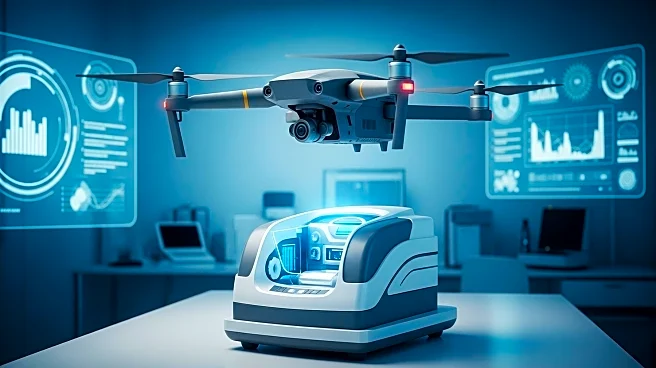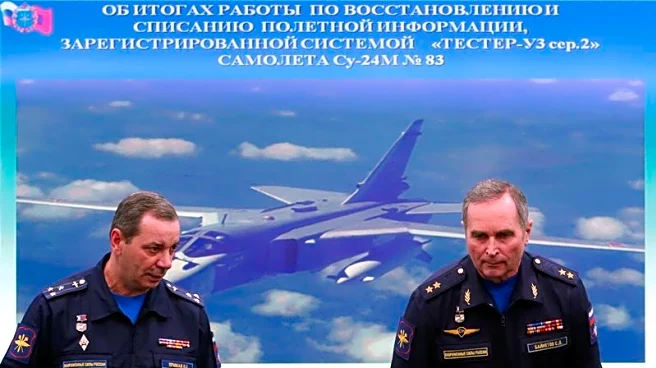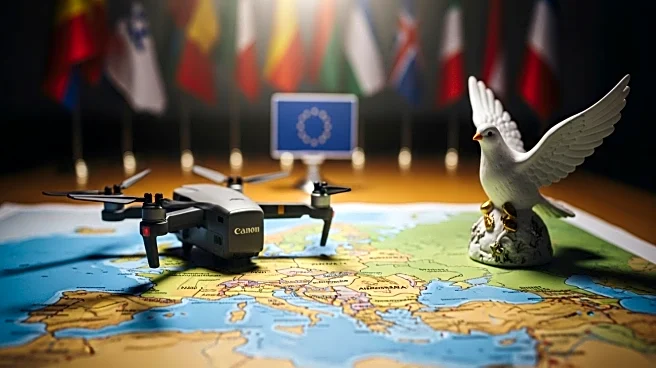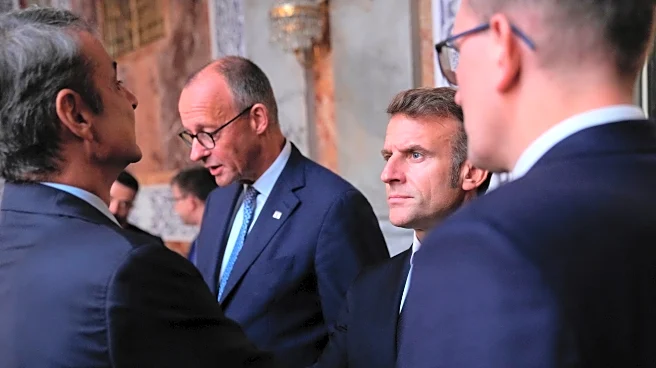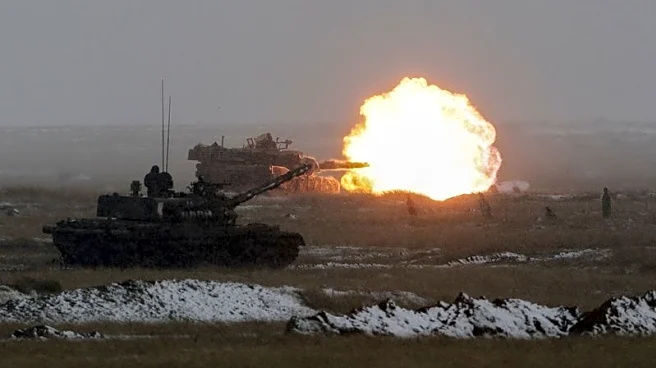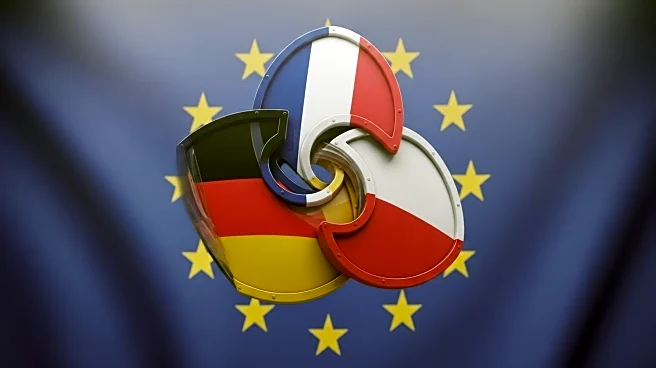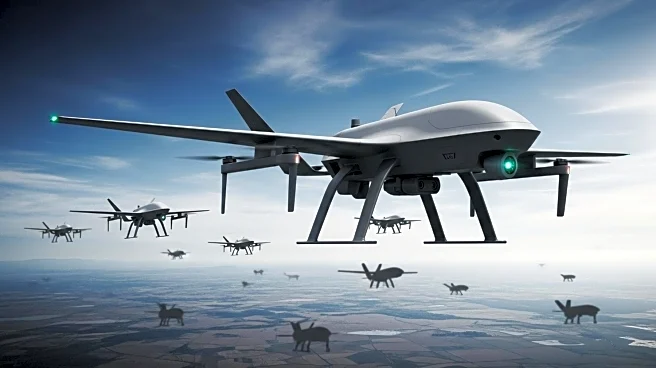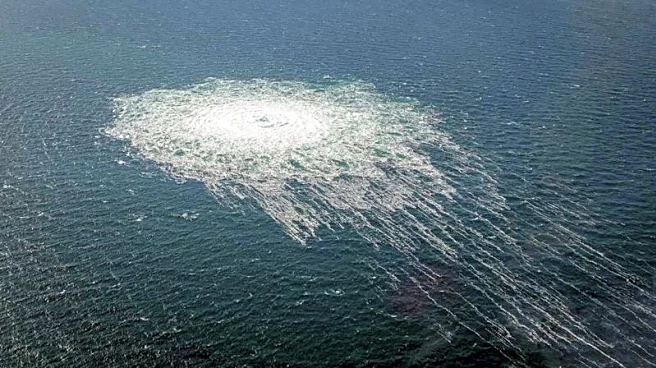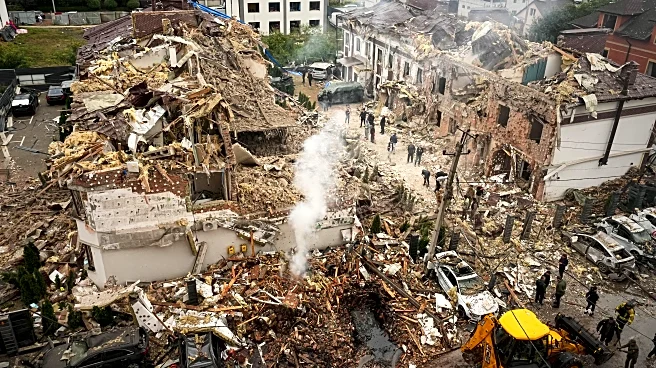What's Happening?
Poland is seeking to improve its counter-drone technology after Russian drones entered its airspace, testing the country's and NATO's defenses. Polish Foreign Minister Radosław Sikorski emphasized the need for more economical and practical defense solutions, as current methods using fighter jets and missiles are not cost-effective against cheap drones. The European Union is leading efforts to secure funding and collaborate with Ukraine, which has developed significant expertise in counter-drone warfare. Poland is also looking to strengthen its military presence with the support of U.S. troops.
Why It's Important?
The incursion of Russian drones into Polish airspace highlights the evolving nature of modern warfare and the challenges faced by NATO countries in defending against unmanned aerial threats. Poland's response underscores the need for innovative and cost-effective defense solutions, as traditional methods may not be sustainable. The situation also emphasizes the importance of international collaboration, with the EU and Ukraine playing key roles in developing counter-drone capabilities. The presence of U.S. troops in Poland further strengthens NATO's defense posture in the region.
What's Next?
Poland's efforts to enhance its counter-drone technology may lead to increased collaboration with NATO allies and further investment in defense capabilities. The situation could prompt other NATO countries to reassess their own defense strategies and invest in similar technologies. The ongoing conflict in Ukraine and the potential for further Russian incursions may also influence regional security policies and international relations. The international community will likely continue to monitor the situation closely, considering the broader implications for regional and global security.

